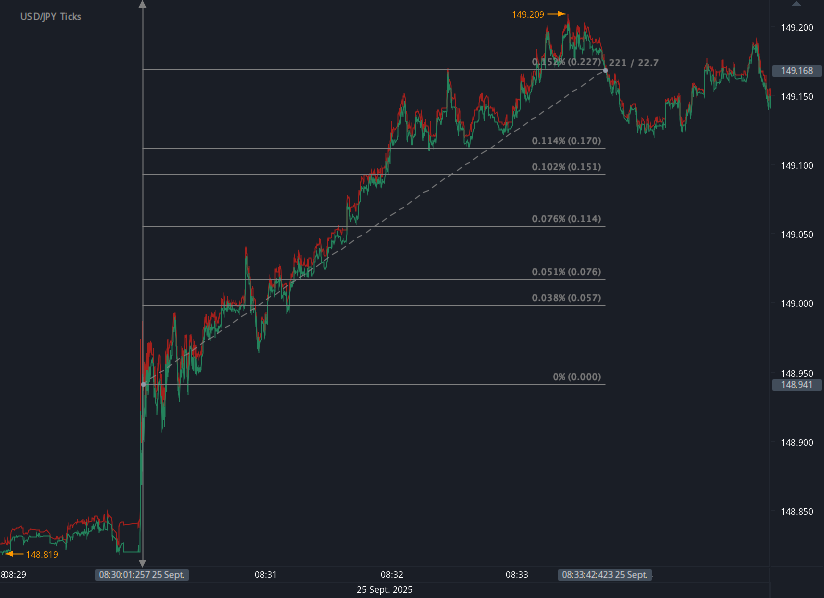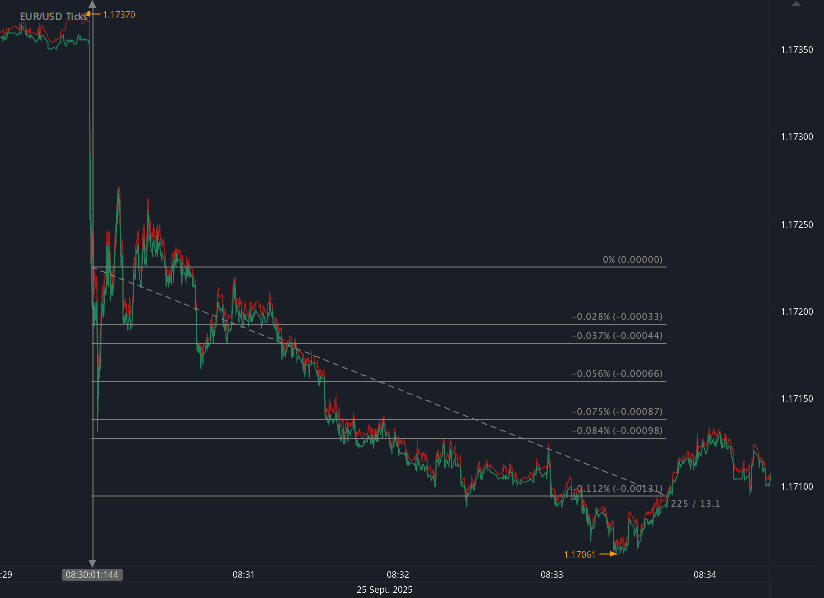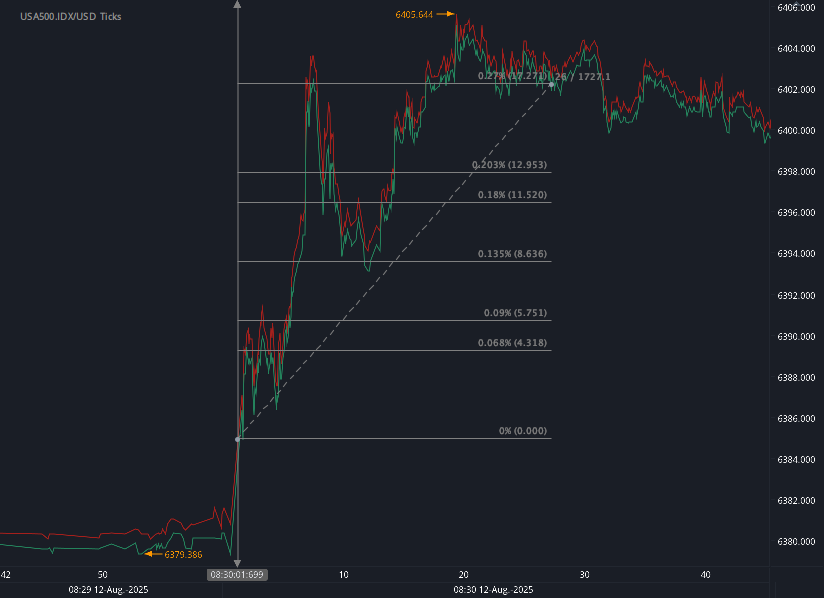According to our analysis USDJPY and EURUSD moved 35 pips on US Jobless Claims data on 25 September 2025.
USDJPY (22 pips)
EURUSD (13 points)
Charts are exported from JForex (Dukascopy).
U.S. Jobless Claims Fall to 218,000 as Labor Market Holds Steady
The U.S. labor market showed continued resilience last week, with unemployment insurance claims trending lower and insured unemployment remaining stable, according to the latest report from the Department of Labor.
Key Highlights from the Week Ending September 20, 2025
Initial jobless claims (seasonally adjusted) fell to 218,000, down 14,000 from the prior week’s revised level of 232,000.
The four-week moving average eased to 237,500, its lowest in over a month.
Insured unemployment—a measure of continued claims—stood at 1.93 million for the week ending September 13, virtually unchanged from the prior week.
The insured unemployment rate held steady at 1.3%, reflecting a tight labor market.
On an unadjusted basis, actual initial claims totaled 180,611, a decline of 14,822 (–7.6%) from the previous week. Seasonal factors had expected only a modest dip, underscoring stronger-than-expected labor demand.
State-Level Trends
Some states saw notable swings in claims:
Increases:
New York (+1,482) – layoffs in construction, healthcare, and professional services
South Carolina (+1,220) – no comment provided
Decreases:
Texas (–4,917)
Connecticut (–4,540)
Michigan (–3,944), driven by fewer manufacturing layoffs
Illinois (–1,153)
California (–1,139)
The highest insured unemployment rates were recorded in New Jersey (2.4%), California (2.0%), Connecticut (2.0%), and Washington (2.0%).
Federal and Special Program Activity
Claims filed by former federal civilian employees rose slightly to 635, while newly discharged veterans filed 420 claims.
Continued weeks claimed under all programs for the week ending September 6 totaled 1.79 million, down from 1.83 million the prior week.
No state triggered “on” the Extended Benefits program.
What It Means
With initial claims trending lower and insured unemployment stable, the labor market remains resilient despite pockets of weakness in certain industries and states. The steady insured unemployment rate at 1.3% indicates that while layoffs occur, most workers are finding jobs relatively quickly.
Barring major shocks, the labor market appears well-positioned heading into the final quarter of 2025.
Disclaimer: This blog post is for informational purposes only and should not be construed as financial advice. Always conduct thorough research and consider seeking advice from a financial professional before making any investment decisions.
Source: https://www.dol.gov/ui/data.pdf
Please let us know your feedback. If you are interested in timestamps, please send us an email to sales@haawks.com.
Start futures forex fx news trading with Haawks G4A low latency machine-readable data today, one of the fastest news data feeds for US macro-economic and commodity data.


























